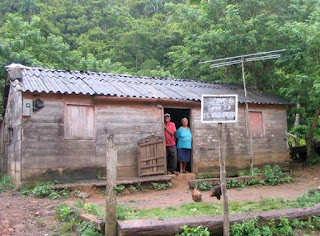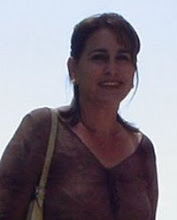 This could be the description on a picture of a traditional country house: from the window we can see the surrounding hills, on one side, there is a room with an unmade bed and a pair of muddy shoes lying under it, a hat hanging on the wall, and in one of its corners, a phone on a small table. Very few narrators would think to locate a phone to describe a Cuban countryside or mountain.
The word Phone is symbol of technological progress, something so far -some could think- from life in the mountain. However, a telephone, a television or computer, are no longer a rarity in this region. The rural or urban, in this case, the mountains or the plains, remain dichotomous relationships, however, distances are shorter when both places try to offer the same opportunities.
An example of this is the Plan Turquino Manatí, a special project created 25 years ago intended to boost agricultural development, forestry, economic and social results to improve the quality of life of the highlanders.
This is not about the farmer losing his identity, and instead of waking up after listening to the rooster, to do it with the "alarm clock" service that the ETECSA Phone Company once offered.
To make the access equal, not only to technology but also to health, education is the objective of this program, implemented in 10 provinces of the island.
The idea emerged on June 2, 1987, during an expanded meeting of the Council of Ministers, with the participation of the First Secretaries of the Provincial Committees of the PCC and the Presidents of the Provincial Assemblies of People's Power.
In Holguin, the Turquino Plan extends from the boundary with the province of Santiago de Cuba, just at the joint of the embankment of Biran and the river Jimbambay in Cueto, to the river Jiguaní, bordering the province of Guantanamo, and covers five municipalities: Cueto, Frank Pais, Mayari, Sagua and Moa.
In this area of abundant rainfall, there is 75% of the water reserve of the province and three protected areas: the Alejandro de Humboldt Park, the Sierra Cristal Park and Pinares de Mayari, one of the greatest reserves of iron and nickel in the world, together with Moa.
There are clinics, sport centers, TV rooms, and units of trade and food that provide services to the mountain dwellers.
Agriculture is one of the main sources of livelihood for the highlanders. Most locals spend the day doing farm work, or raising animals, therefore, good results in this area are an incentive for the community.
The mountainous landscape is not the same, neither are mountain dwellers. Geography continues to define their way of life, but not in the same way as it did before. Not forgetting the exceptions, now they have many other opportunities that change their way of seeing the world and seeing themselves.
Written by Aracelis Aviles Suarez
This could be the description on a picture of a traditional country house: from the window we can see the surrounding hills, on one side, there is a room with an unmade bed and a pair of muddy shoes lying under it, a hat hanging on the wall, and in one of its corners, a phone on a small table. Very few narrators would think to locate a phone to describe a Cuban countryside or mountain.
The word Phone is symbol of technological progress, something so far -some could think- from life in the mountain. However, a telephone, a television or computer, are no longer a rarity in this region. The rural or urban, in this case, the mountains or the plains, remain dichotomous relationships, however, distances are shorter when both places try to offer the same opportunities.
An example of this is the Plan Turquino Manatí, a special project created 25 years ago intended to boost agricultural development, forestry, economic and social results to improve the quality of life of the highlanders.
This is not about the farmer losing his identity, and instead of waking up after listening to the rooster, to do it with the "alarm clock" service that the ETECSA Phone Company once offered.
To make the access equal, not only to technology but also to health, education is the objective of this program, implemented in 10 provinces of the island.
The idea emerged on June 2, 1987, during an expanded meeting of the Council of Ministers, with the participation of the First Secretaries of the Provincial Committees of the PCC and the Presidents of the Provincial Assemblies of People's Power.
In Holguin, the Turquino Plan extends from the boundary with the province of Santiago de Cuba, just at the joint of the embankment of Biran and the river Jimbambay in Cueto, to the river Jiguaní, bordering the province of Guantanamo, and covers five municipalities: Cueto, Frank Pais, Mayari, Sagua and Moa.
In this area of abundant rainfall, there is 75% of the water reserve of the province and three protected areas: the Alejandro de Humboldt Park, the Sierra Cristal Park and Pinares de Mayari, one of the greatest reserves of iron and nickel in the world, together with Moa.
There are clinics, sport centers, TV rooms, and units of trade and food that provide services to the mountain dwellers.
Agriculture is one of the main sources of livelihood for the highlanders. Most locals spend the day doing farm work, or raising animals, therefore, good results in this area are an incentive for the community.
The mountainous landscape is not the same, neither are mountain dwellers. Geography continues to define their way of life, but not in the same way as it did before. Not forgetting the exceptions, now they have many other opportunities that change their way of seeing the world and seeing themselves.
Written by Aracelis Aviles Suarez
Tuesday, June 5, 2012
Life in Cuban Mountains
 This could be the description on a picture of a traditional country house: from the window we can see the surrounding hills, on one side, there is a room with an unmade bed and a pair of muddy shoes lying under it, a hat hanging on the wall, and in one of its corners, a phone on a small table. Very few narrators would think to locate a phone to describe a Cuban countryside or mountain.
The word Phone is symbol of technological progress, something so far -some could think- from life in the mountain. However, a telephone, a television or computer, are no longer a rarity in this region. The rural or urban, in this case, the mountains or the plains, remain dichotomous relationships, however, distances are shorter when both places try to offer the same opportunities.
An example of this is the Plan Turquino Manatí, a special project created 25 years ago intended to boost agricultural development, forestry, economic and social results to improve the quality of life of the highlanders.
This is not about the farmer losing his identity, and instead of waking up after listening to the rooster, to do it with the "alarm clock" service that the ETECSA Phone Company once offered.
To make the access equal, not only to technology but also to health, education is the objective of this program, implemented in 10 provinces of the island.
The idea emerged on June 2, 1987, during an expanded meeting of the Council of Ministers, with the participation of the First Secretaries of the Provincial Committees of the PCC and the Presidents of the Provincial Assemblies of People's Power.
In Holguin, the Turquino Plan extends from the boundary with the province of Santiago de Cuba, just at the joint of the embankment of Biran and the river Jimbambay in Cueto, to the river Jiguaní, bordering the province of Guantanamo, and covers five municipalities: Cueto, Frank Pais, Mayari, Sagua and Moa.
In this area of abundant rainfall, there is 75% of the water reserve of the province and three protected areas: the Alejandro de Humboldt Park, the Sierra Cristal Park and Pinares de Mayari, one of the greatest reserves of iron and nickel in the world, together with Moa.
There are clinics, sport centers, TV rooms, and units of trade and food that provide services to the mountain dwellers.
Agriculture is one of the main sources of livelihood for the highlanders. Most locals spend the day doing farm work, or raising animals, therefore, good results in this area are an incentive for the community.
The mountainous landscape is not the same, neither are mountain dwellers. Geography continues to define their way of life, but not in the same way as it did before. Not forgetting the exceptions, now they have many other opportunities that change their way of seeing the world and seeing themselves.
Written by Aracelis Aviles Suarez
This could be the description on a picture of a traditional country house: from the window we can see the surrounding hills, on one side, there is a room with an unmade bed and a pair of muddy shoes lying under it, a hat hanging on the wall, and in one of its corners, a phone on a small table. Very few narrators would think to locate a phone to describe a Cuban countryside or mountain.
The word Phone is symbol of technological progress, something so far -some could think- from life in the mountain. However, a telephone, a television or computer, are no longer a rarity in this region. The rural or urban, in this case, the mountains or the plains, remain dichotomous relationships, however, distances are shorter when both places try to offer the same opportunities.
An example of this is the Plan Turquino Manatí, a special project created 25 years ago intended to boost agricultural development, forestry, economic and social results to improve the quality of life of the highlanders.
This is not about the farmer losing his identity, and instead of waking up after listening to the rooster, to do it with the "alarm clock" service that the ETECSA Phone Company once offered.
To make the access equal, not only to technology but also to health, education is the objective of this program, implemented in 10 provinces of the island.
The idea emerged on June 2, 1987, during an expanded meeting of the Council of Ministers, with the participation of the First Secretaries of the Provincial Committees of the PCC and the Presidents of the Provincial Assemblies of People's Power.
In Holguin, the Turquino Plan extends from the boundary with the province of Santiago de Cuba, just at the joint of the embankment of Biran and the river Jimbambay in Cueto, to the river Jiguaní, bordering the province of Guantanamo, and covers five municipalities: Cueto, Frank Pais, Mayari, Sagua and Moa.
In this area of abundant rainfall, there is 75% of the water reserve of the province and three protected areas: the Alejandro de Humboldt Park, the Sierra Cristal Park and Pinares de Mayari, one of the greatest reserves of iron and nickel in the world, together with Moa.
There are clinics, sport centers, TV rooms, and units of trade and food that provide services to the mountain dwellers.
Agriculture is one of the main sources of livelihood for the highlanders. Most locals spend the day doing farm work, or raising animals, therefore, good results in this area are an incentive for the community.
The mountainous landscape is not the same, neither are mountain dwellers. Geography continues to define their way of life, but not in the same way as it did before. Not forgetting the exceptions, now they have many other opportunities that change their way of seeing the world and seeing themselves.
Written by Aracelis Aviles Suarez
Subscribe to:
Post Comments (Atom)


1 comment:
J'aimerais bien passer une journée avec une famille cubaine, participer au travail de la journée ainsi qu'a la préparation du repas et faire la fête avec eu avec la musique traditionnel.
Post a Comment